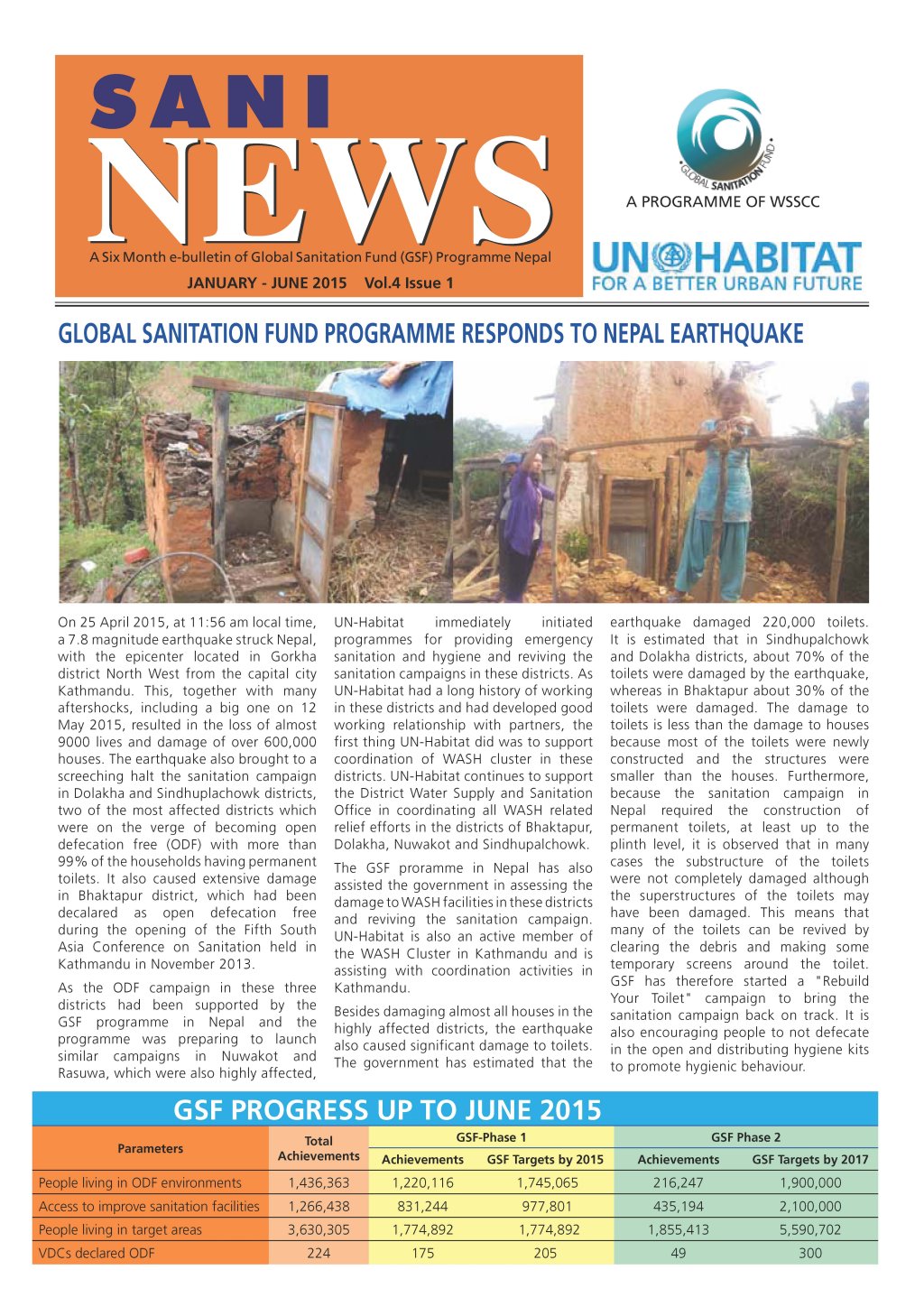
Sanitation at the time of Earthquake
The 25 April Earthquake not only shook the ground under our feet but it also shook the sanitation campaign in Nepal as districts such as Sindhupalchowk and Dolakha which already had achieved more than 99% sanitation campaign were some of the worst hit districts. The ODF campaigns which were heading towards their climax came to a screeching halt as priority shifted from sanitation to shelter and immediate relief. UN-Habitat also stopped its regular programmes for a while to focus on emergency activities.
These two months have shown us not only the resilience of the Nepali people but also the resilience of the sanitation campaign. It did not take long to realize that although the earthquake had damaged over 90% of the houses in the highly affected districts, the damage of toilets were less because they were newly built and were often quite strong. Furthermore, as the sanitation campaign required people to bring permanent toilets up to plinth level, in many instances, the substructure of the toilets were intact even when the super structure collapsed. As a result, many of the toilets could be revived after removing the debris and some maintenance.
More importantly, the sanitation campaign had encouraged everyone to make two toilets – one in their minds and the other in their homes. Although the physical toilets may have been destroyed, the earthquake has not been able to damage the toilets in the minds of people. As a result, in open defecation is not a common scene in many of the disaster affected communities. Nepal’s sanitation campaign may have been shaken but it certainly has not collapsed.
We will revive Nepal’s sanitation Campaign and the target of Open Defecation Free Nepal by 2017 still stands.